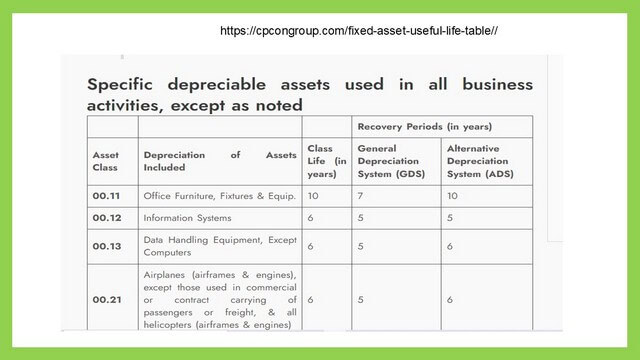Last Updated on June 15, 2025 by Maged kamel
Depreciation, book value.
What are the depreciation expense and salvage value?
Depreciation expense is an allocated portion of the cost of a company’s fixed assets. We have already explained the fixed assets appropriate for the accounting period Indicated in the company statement.
The financial department prepares the income statement. If a company had paid $2400,000 for its office building excluding land and the building has an estimated useful life of 40 years, each monthly income statement will report a straight-line depreciation expense of $5000 for 480 months, which is the value of 2,400,000/480=$5000.
In general, salvage value is the value of a piece of equipment or other property after it has been functionally rendered useless for its intended purpose. I quote that salvage value is the estimated value that the owner is paid when the item is sold at the end of its useful life.
The salvage value is used to determine annual depreciation in accounting records and to calculate depreciation expenses on a tax return.
In accounting, salvage value is the estimated amount expected to be received at the end of a plant asset’s useful life. It is sometimes referred to as disposal value, residual value, terminal value, or scrap value.
The estimated salvage value is deducted from the asset’s cost to determine the total depreciation expense that will be reported during its useful life.
Accountants and income tax regulations often assume that plant assets will have no salvage value. This results in an asset’s entire cost being depreciated during the years that it is used in the business.
What is a useful life?
Useful life estimates the average number of years an asset is considered Usable before this value is fully depreciated.
Tabulated values of useful life.
I have attached a list quoted from an internet resource for the useful lives of different assets. For example, the useful lives of machinery and equipment are 5 years. The relative link is shown in the slide. This is the source link.
What does per Annum mean?
Per annum means annually or annually. For example, if the business charges the customer 1.50% per month on any unpaid balance, the per annum rate is 18%, which is 1.50/ month*12=18%.
Example of Per Annum.
An example involves a supplier offering a credit customer an early-payment discount of 2% for paying an invoice in 10 days instead of paying the full amount in 30 days. In this example, the supplier is giving up 2% of the invoice to be paid 20 days early.
To compute the rate per annum, we restate the amounts by multiplying both the “2%” and the “20 days” by 18 (to get close to the 365 days in a year). The result is a per annum rate of approximately 36%. Another example involves a business charging its customers 1.5% per month on any past balance. The monthly rate of 1.5% can be converted to 18% per annum by multiplying the 1.5% by 12 months in a year.
What is the book value?
The book value of an asset is equal to the carrying value on the balance sheet and is calculated by netting the asset against its accumulated depreciation.
Due to depreciation, the asset’s value decreases annually; this value is recorded as the book value.

Due to depreciation, the asset’s value decreases annually; this value is recorded as the book value.
Book value is also a company’s net asset value, calculated as total assets minus intangible assets, patents, goodwill, and liability.
Another form of intangible assets is intangible assets, which lack physical existence. The following slide shows examples of depreciable assets with class life.

Please click on any image, and you will have a slide show. Each photo will appear more transparent.







This is a good link -Engineering Economy. A good referance
The next post: The similarity between cash flows and forces.